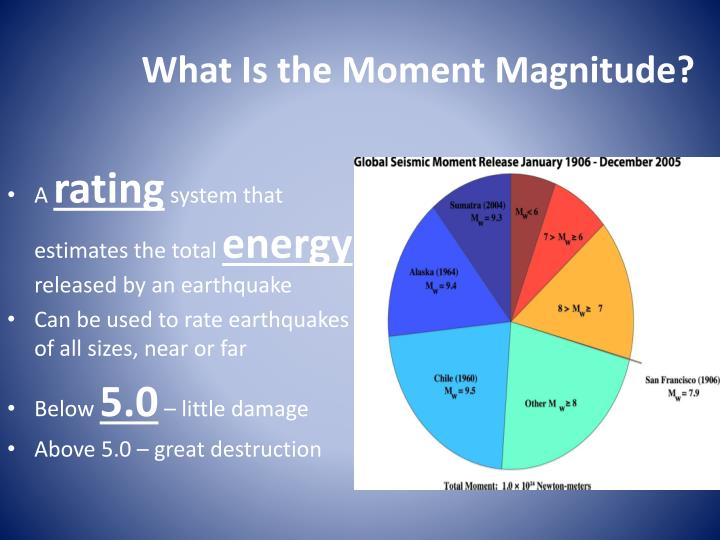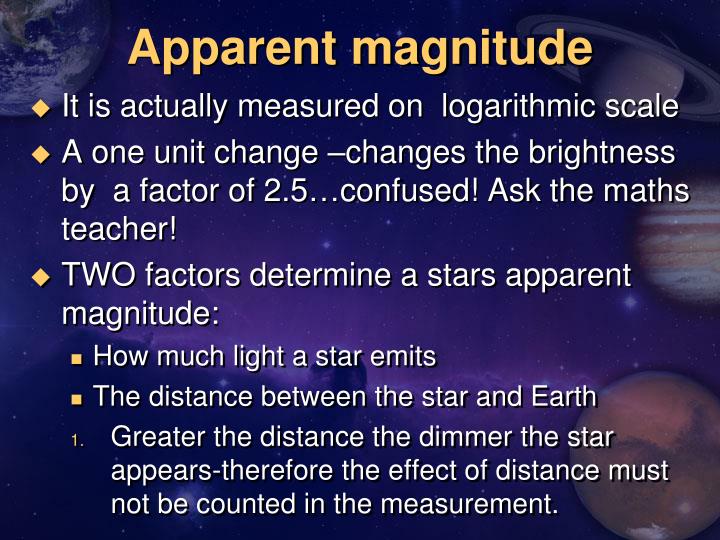

He established a reference point and the now familiar ten-fold (exponential) scaling of each degree of magnitude, and in 1935 published what he called the "magnitude scale", now called the local magnitude scale, labeled M L .
#Moment magnitude scale earth science definition how to#
Richter then worked out how to adjust for epicentral distance (and some other factors) so that the logarithm of the amplitude of the seismograph trace could be used as a measure of "magnitude" that was internally consistent and corresponded roughly with estimates of an earthquake's energy. The initial step in determining earthquake magnitudes empirically came in 1931 when the Japanese seismologist Kiyoo Wadati showed that the maximum amplitude of an earthquake's seismic waves diminished with distance at a certain rate. History Richter scale: the original measure of earthquake magnitude Īt the beginning of the twentieth century, very little was known about how earthquakes happen, how seismic waves are generated and propagate through the earth's crust, and what information they carry about the earthquake rupture process the first magnitude scales were therefore empirical. Subtypes of the moment magnitude scale (M ww , etc.) reflect different ways of estimating the seismic moment. Geological Survey for reporting large earthquakes (typically M > 4), replacing the local magnitude (M L ) and surface wave magnitude (M s ) scales.

It has become the standard scale used by seismological authorities like the U.S. It is more directly related to the energy of an earthquake than other scales, and does not saturate – that is, it does not underestimate magnitudes as other scales do in certain conditions. Moment magnitude (M w ) is considered the authoritative magnitude scale for ranking earthquakes by size. Despite the difference, news media often says "Richter scale" when referring to the moment magnitude scale. Similar to the local magnitude/Richter scale (M L ) defined by Charles Francis Richter in 1935, it uses a logarithmic scale small earthquakes have approximately the same magnitudes on both scales.

It was defined in a 1979 paper by Thomas C. The moment magnitude scale ( MMS denoted explicitly with M w or Mw, and generally implied with use of a single M for magnitude ) is a measure of an earthquake's magnitude ("size" or strength) based on its seismic moment.


 0 kommentar(er)
0 kommentar(er)
